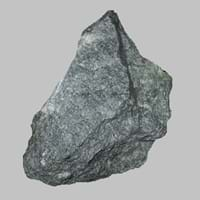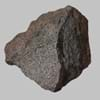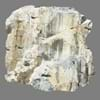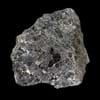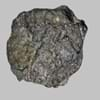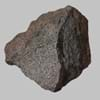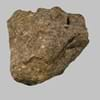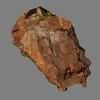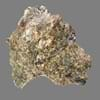Definition
Foidolite is a rare type of coarse-grained intrusive igneous rock with a feldspathoid mineral content greater than 60%
It is a metamorphic magnesium rich rock because it is composed of the mineral talc
Discoverer
Unknown
Unknown
Etymology
From the mineral feldspathoid which is the main content of rock
From 17th century, because of its greasy feel and use like a soap
Class
Igneous Rocks
Metamorphic Rocks
Sub-Class
Durable Rock, Soft Rock
Durable Rock, Soft Rock
Group
Plutonic
Not Applicable
Other Categories
Coarse Grained Rock, Fine Grained Rock, Medium Grained Rock, Opaque Rock
Fine Grained Rock, Opaque Rock
Color
Black, Brown, Green, Grey, Pink, White
Black, Black to Grey, Green, Grey
Durability
Durable
Durable
Appearance
Dull
Dull, Banded and Foilated
Interior Uses
Decorative Aggregates, Interior Decoration
Bathrooms, Decorative Aggregates, Homes, Interior Decoration
Exterior Uses
As Building Stone, As Facing Stone, Garden Decoration, Paving Stone
As Facing Stone, Garden Decoration
Other Architectural Uses
Curbing
Curbing
Construction Industry
As Dimension Stone, Cement Manufacture, for Road Aggregate
Manufacture of Magnesium and Dolomite Refractories
Medical Industry
Taken as a Supplement for Calcium or Magnesium
Taken as a Supplement for Calcium or Magnesium
Antiquity Uses
Artifacts, Monuments, Sculpture
Artifacts, Jewellery, Monuments, Sculpture
Commercial Uses
Cemetery Markers, Commemorative Tablets, Creating Artwork
Cemetery Markers, Creating Artwork, Gemstone, Jewelry, Manufacture of Soap, Solvents, Dyes, Plastics and Fibres, Production of Lime, Source of Magnesia (MgO)
Types
Not Available
Not Available
Features
Host Rock for Lead
Host Rock for Lead
Archaeological Significance
Famous Monuments
Not Available
Christ the Redeemer in Rio de Janeiro, Stonehenge in English county of Wiltshire
Famous Sculptures
Not Available
Not Available
Formation
Foidolites is a fine-grained, hard rock which is a type of metasomatite, essentially altered basalt. It forms with or without crystallization, either below the surface as intrusive rocks or on the surface as extrusive rocks.
Soapstone is a talc-schist, which is a type of metamorphic rock and it is largely composed of the mineral talc and is thus rich inmagnesium.
Mineral Content
Amphibole, Biotite, Feldspar, Olivine, Plagioclase, Pyroxene
Albite, Apatite, Biotite, Calcite, Carbonate, Clay Minerals, Hornblende, Ilmenite, Micas, Plagioclase, Pyroxene, Quartz
Compound Content
Aluminium Oxide, CaO, Iron(III) Oxide, FeO
CaO, Mg, MgO
Types of Metamorphism
Burial Metamorphism, Cataclastic Metamorphism, Hydrothermal Metamorphism, Impact Metamorphism
Burial Metamorphism, Cataclastic Metamorphism, Contact Metamorphism, Hydrothermal Metamorphism, Impact Metamorphism, Regional Metamorphism
Types of Weathering
Not Applicable
Not Applicable
Types of Erosion
Not Applicable
Not Applicable
Grain Size
Medium to Fine Coarse Grained
Fine Grained
Fracture
Conchoidal
Conchoidal
Porosity
Very Less Porous
Less Porous
Luster
Subvitreous to Dull
Greasy
Compressive Strength
Not Available
Toughness
Not Available
1
Specific Gravity
2.86
2.86
Transparency
Translucent
Opaque
Density
Not Available
2.8-2.9 g/cm3
Specific Heat Capacity
Not Available
Resistance
Heat Resistant, Wear Resistant
Heat Resistant, Pressure Resistant
Deposits in Eastern Continents
Asia
Russia
China, India, Indonesia, Japan, North Korea, Russia, Saudi Arabia, Singapore, South Korea, Sri Lanka, Tajikistan, Thailand
Africa
South Africa, Western Africa
Egypt, Ethiopia, Ghana, South Africa, Western Africa
Europe
Not Available
Austria, England, Finland, France, Germany, Greece, Spain, Sweden, Switzerland, United Kingdom
Others
Not Available
Not Available
Deposits in Western Continents
North America
Canada, USA
Canada, USA
South America
Not Available
Colombia
Deposits in Oceania Continent
Australia
Central Australia, Western Australia
Central Australia, New Zealand, Queensland
All about Foidolite and Soapstone Properties
Know all about Foidolite and Soapstone properties here. All properties of rocks are important as they define the type of rock and its application. Foidolite belongs to Igneous Rocks while Soapstone belongs to Metamorphic Rocks.Texture of Foidolite is Earthy whereas that of Soapstone is Polished. Foidolite appears Dull and Soapstone appears Dull, Banded and Foilated. The luster of Foidolite is subvitreous to dull while that of Soapstone is greasy. Foidolite is available in black, brown, green, grey, pink, white colors whereas Soapstone is available in black, black to grey, green, grey colors. The commercial uses of Foidolite are cemetery markers, commemorative tablets, creating artwork and that of Soapstone are cemetery markers, creating artwork, gemstone, jewelry, manufacture of soap, solvents, dyes, plastics and fibres, production of lime, source of magnesia (mgo).

